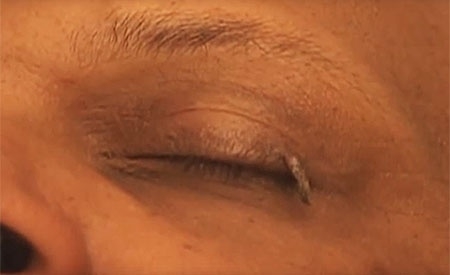
- #Skin tags on eyelids betadine skin
- #Skin tags on eyelids betadine professional
- #Skin tags on eyelids betadine free
Be sure to take off your gloves and wash your hands before touching your face. Consider wearing gloves when cleaning or doing laundry. Many of these products are labeled “made for sensitive skin.” Toss any product that is past its expiration date.
#Skin tags on eyelids betadine free
Use facial cleansers, moisturizers, and makeup products free of fragrances, dyes, and other common irritants. You may be able to identify foods that make itching or redness worse. Food allergies can sometimes cause a flare of symptoms. Talk to your healthcare provider about whether itch relief creams are suitable for your symptoms and, if so, which ones. Scratching can also damage delicate eye tissues. The more your fingertips touch your eye area, the more you risk infection. They can contain plastic materials called acrylates that cause or worsen eyelid dermatitis. If you have artificial nails, consider having them removed as well. If you think your makeup might be causing your eyelid dermatitis, go without it for a few days and check your symptoms.
#Skin tags on eyelids betadine skin
Also, wearing loose clothing and not wearing jewelry in places that may come into contact with skin tags can help reduce irritation. However, a doctor may also schedule follow-up visits to ensure that the skin heals properly and that no further treatments are necessary.ĭoctors may advise people with skin tags to maintain a moderate weight and practice healthful habits, such as getting enough exercise, staying hydrated, and getting enough rest.Īdopting these habits may help reduce the chance of developing new skin tags.
#Skin tags on eyelids betadine professional
Typically, with professional removal, it only takes one session to remove a skin tag. Most skin tags will heal on their own with proper care, such as moisturizing and basic hygiene.

electrocautery, which refers to delivering heat via an electric current.surgical excision, which refers to cutting it out using scissors or other cutting tools.However, if they are irritating, uncomfortable, painful, large, or in an awkward location, a doctor or surgeon can remove them using one of several methods. Skin tags typically do not need to be removed.

However, most people will stop developing new skin tags after the age of 70 years. Skin tags can develop starting in someone’s teenage years or 20s. The chance of developing skin tags tends to increase with age. Importantly, skin tags can sometimes look like growths associated with other skin conditions, such as:



 0 kommentar(er)
0 kommentar(er)
